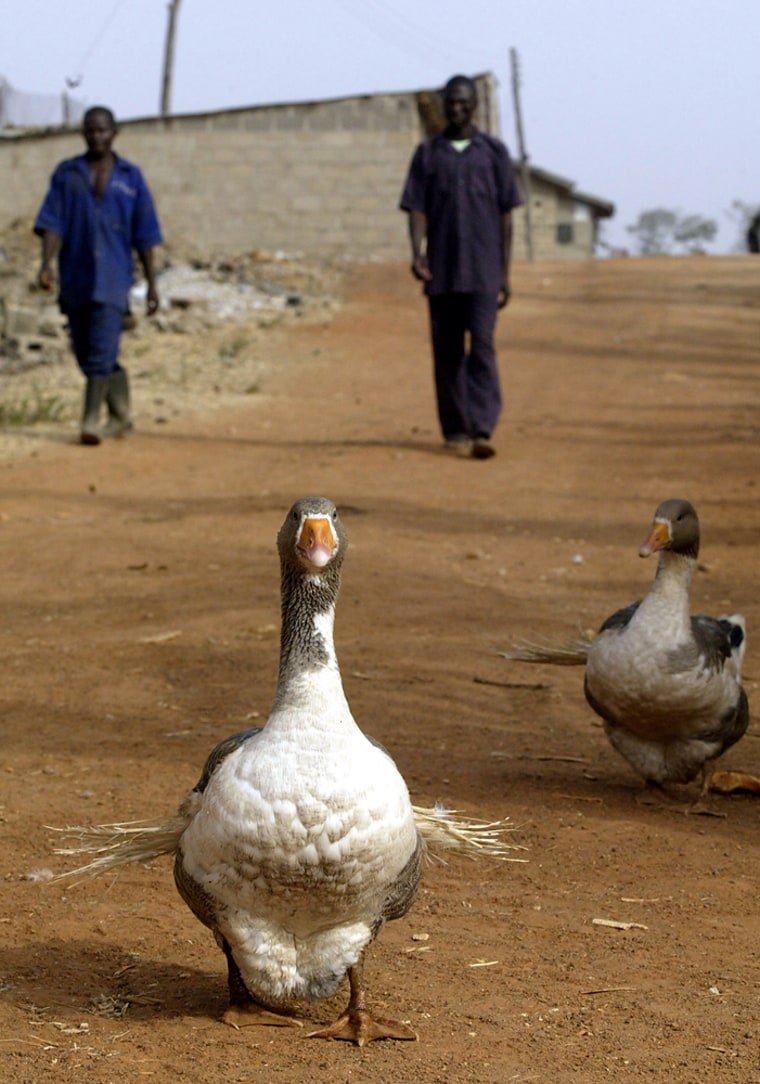Scientists say they’ve found surprising evidence from Nigeria, the first African nation to report a dangerous form of bird flu, that the virus entered the country at least three times.
One expert said that suggests that the H5N1 virus spreads more efficiently than researchers had thought.
The new findings in a paper in Thursday’s issue of the journal Nature do not reveal whether the virus was delivered to Nigeria by migratory birds or by imported or smuggled birds.
“We think the most likely explanation is that it came by migratory birds, but we can’t exclude the other possibilities,” said Albert Osterhaus of the Erasmus Medical Center in Rotterdam, The Netherlands, an author of the paper.
The paper says Nigeria has many bird sanctuaries along two migratory flight paths that connect with southern Russia, Europe and western Asia. It’s not clear which species of migratory birds might have been involved in possibly transporting the virus, Osterhaus said.
Nigeria first reported H5N1 bird flu in February, at a large commercial farm that raised chickens, geese and ostriches. The virus has since shown up in birds at other locations around the country.
The virus can jump to humans, and scientists worry that it may mutate into a form that spreads easily and rapidly among people, setting off a deadly flu pandemic. However, the vast majority of the more than 200 human cases globally so far have come from exposure to infected birds.
For the Nature study, researchers compared the genetic makeup of H5N1 virus samples from northern Nigeria and from two farms in southwest Nigeria.
They found distinct strains that differed so much from each other that they probably did not all arise within Nigeria, Osterhaus said. Instead, the diversity suggests that three different strains entered Nigeria independently, though it’s impossible to tell where they came from, he said.
Yoshihiro Kawaoka, a virologist from the University of Wisconsin-Madison and the University of Tokyo who didn’t take part in the study, said the researchers make a good case for three different introductions of the virus. That’s a surprise, because ordinarily one would expect the virus to enter just once and then diversify within a country, he said.
“Obviously the virus is spreading more efficiently than we thought,” Kawaoka said. “Maybe similar things could happen in other countries.”
